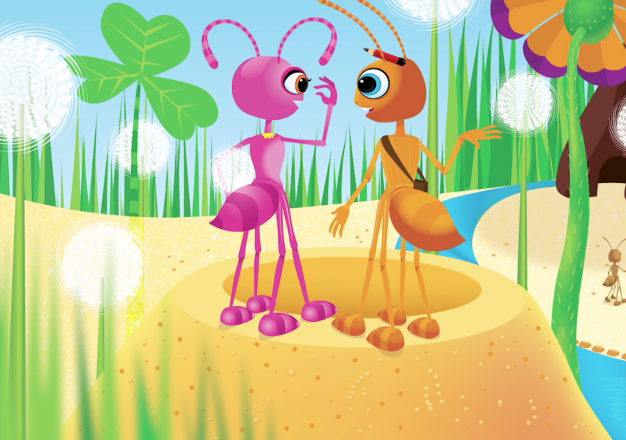You Cannot Do It By Yourself

We interviewed a mother of a child who has been diagnosed with ASD.
In this interview we explored the importance of collaboration between home and school. We would like to express our gratitude to this mother for sharing with us her family’s primary school experience.
Tell us about your little boy
Peter* is currently in grade two. He is seven years old. When he was very little he struggled to talk. It wasn’t until he was three years old that he began to talk. This was very frustrating for him, especially throughout his kindergarten year. When we received his diagnosis of ASD at the beginning of his Prep year it really helped change things, and helped me understand my son. My husband and I were both a bit lost beforehand.
What are his positive attributes and strengths?
Peter’s positive attributes continue to grow and he becomes more loveable as the years go on. He is extremely empathetic to others. This can sometimes be frightening to a child who is upset as Peter will just wrap them in a big bear hug or cover them in tissues. His strengths would be anything mechanical or science related. He attacks problems in a way that I would never think of.
What are some of his everyday challenges?
Peter has issues with noise and sensory processing. He can get quite angry if someone invades his personal space or sings close by him. He also has trouble transitioning from one subject to another. Simple everyday tasks such as changing classes can be a challenge for Peter.
You have made a strong effort to collaborate with school staff and the after school-care team. Why did you do this?
I felt that it was one of the best ways to help my son, our family, the school, and the other children in his class – to work together as a community. You cannot do it by yourself. You need others’ help – and the only way to get help is through collaboration and being honest and supportive.
How does the school respond to your efforts?
The feedback has just been so positive. Being in denial about your circumstance doesn’t help anybody. You have to share information and not let your pride get in the way. You are there for your child and there is a need to consider other children as well. You’ve got to be present and supportive in considering the impact that your child’s personality could have on others. The after school-care people, special education staff and teachers have taken on board any information or supportive tools that I share. They just love it.
How has your son benefited from the collaborative relationship you have with his school team?
Peter has definitely benefited from the honest and open relationship I have with his school. I think the school has gained a better understanding of where Peter’s behavioural issues stem from and how to manage them. The school understands how to prime Peter for different situations. For example, they know that he needs help during lunchtime so they support him in play.
Can you give us an example of how you and the school team worked collaboratively to overcome a specific challenge?
Peter struggles with classes and situations where he is required to sit and listen, such as assembly. It’s very challenging for him. My son has attended two different schools and both have been very good in managing this. At his first school, he still attended assembly but they gave him a bag of fiddly things to preoccupy him. At his current school, they have decided assembly isn’t that important for Peter so he goes to the Special Education Unit instead to work with other children there. Both schools have been very flexible.
I think if Peter had been forced to sit and listen in assembly, he would have broken down, rolled around, screamed, kicked, hit and bit. He can regress really easily if he is cornered and pushed. If Peter feels forced in any situation, then unfortunately there is collateral damage with other children and staff. Both schools have managed the challenge of assembly very well.
Tell us an example of a positive outcome from this collaboration
Peter’s current teacher is really flexible, particularly with Peter’s spatial issues. Peter is allowed to have his own little desk away from the general traffic of the other children. Once he has finished his work he is rewarded with an item from an art and craft box that no other child has, or is allowed to play with, and I think that’s really lovely.
How has the school supported open communication and how have you supported this communication?
The school has always been so upfront and honest. They have made me aware that if I have any concerns, I can contact them any time (within reason) by sending emails or chatting to them face to face. They have also made Peter feel very comfortable. If he feels worried or upset about something he knows he can talk to someone.
From the get-go I didn’t hide behind Peter’s diagnosis or make excuses for his behaviour such as, “Oh, he didn’t sleep very well last night”.
I try to provide the school with strategies and support tools as often as possible. I communicate with his teachers regularly via email to share information. I am professional with them and they are professional with me. You can have a bit of a laugh but at the end of the day you have to stay professional and respectful. There are boundaries.
What have your major responsibilities been throughout the collaboration?
I need to maintain continuity with what’s happening at school and reward Peter for displaying expected behaviours. If there’s an unexpected outcome in a school day then I try to work out how I can support Peter’s learning more at home by going over the strategies he learnt in therapy to reinforce them in his mind.
What has been the greatest difficulty in collaboration?
Time management. The school is limited in a lot of ways with their available time, auxiliary staff and supports. Sometimes frequent communication can be hard. As much as you can try to get a hold of people, it’s still a busy school.
What advice would you give to other parents who are seeking to collaborate?
Get the names of everybody who is involved with your child – your child’s teacher, the principal, and the special education team. That way you can include all the key people in your emails so everyone is ‘in the know’. I also find that having other information available from paediatricians, psychologists or speech pathologists is very helpful. I have heard of people writing an open letter to the other parents of children in the class to let them know, “This is my child, these are his challenges, please do not hesitate to come and talk to me if you have any concerns”. I have been very lucky so far with parents who have, for the most part, been very understanding.
*Name has been changed to protect the privacy of this child
For the month of April, MASTER is donating 10% of proceeds from the Ant Patrol® Children’s Stories to Autism Queensland in support of Go Blue for Autism.





